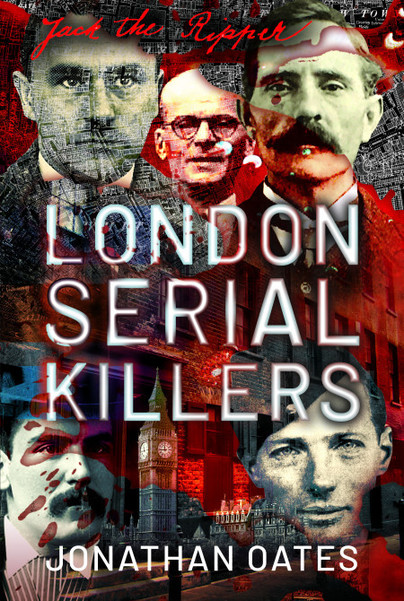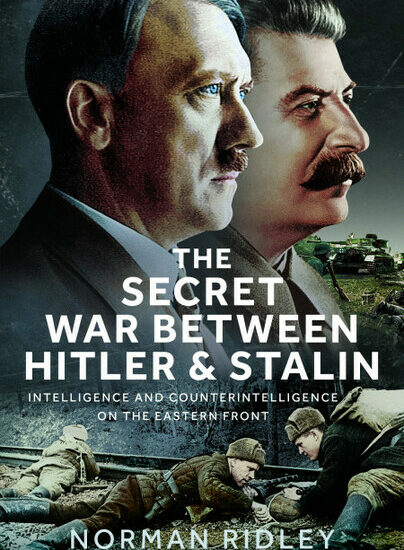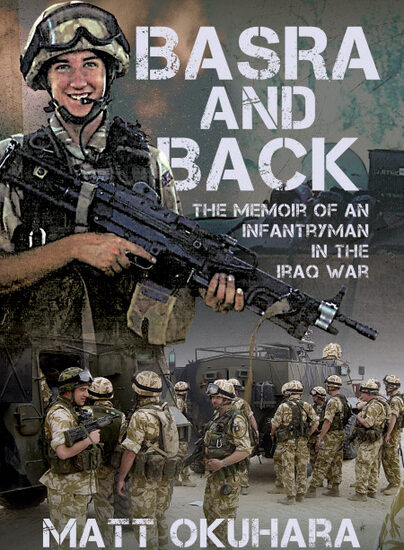Author guest post: Dr Jonathan Oates
Serial killers are everywhere in fiction. They prey on young women and are motivated by sex and sadism. But is this really true in reality? The fact is that although most murderers are men and most of their victims are female, some are men, and they are from all age groups, though predominantly are young.
This new book takes an indepth look at the serial killers, their victims and their crimes in London from 1888-1965. Using police archives, court records, contemporary newspapers and memoirs of those involved, this book examines the nine undisputed serial killings in these decades, as well as several other killings which might have been the work of one killer. These include killings of women in Soho in both the 1930s and 1940s, child murders in east London in the late Victorian era and the Thames torso murders of the 1880s.
Some of these murders are well known. There can be few who have not heard of the Jack the Ripper murders of 1888. John Christie of 10 Rillington Place, acid bath murderer John Haigh and Brides in the Bath killer George Joseph Smith are also not entirely unknown.
Yet others are less well known. Gordon Cummins, the Black Out Ripper, is not as notorious as perhaps he should be. The most recent killer in this book, Jack the Stripper, is also relatively unknown.
However, the most obscure of these killers is the only one who was female. She was also the most prolific. She worked from home and at those of neighbours, relatives and friends in the late Victorian era and was a contemporary of the unknown Whitechapel murderer. This book features the most complete account of her crimes and her victims, who may well have reached double digits.
Another surprise that the book has is that many of these murderers were motivated by money. At least four killed for cash. This is not the common view of such killers’ motives.
It is important to remember the victims in these murders. In some cases, where the murderer is unknown, far more is known about the victims than the killer. Just as the murderers were human, so were their victims and although the former make conscious decisions to kill, the latter have no conscious death wish.
The average true crime reader will already have heard of the bulk of these cases, most of which have had books already devoted to them as well as appearing in previous compilations. This book aims to provide concise, yet detailed accounts of the cases, backed up by contemporary evidence. I have already written biographies of two of the murderers included here and so already had enough material to write about them. In the case of Christie I was additionally able to draw on the recently published memoir of the brother of one of Christie’s co-tenants who met all the key personalities of the case and discussed them. I was also able to show for the first time a photograph of the only surviving part of the property (most of which was destroyed in 1970).
In the case of the Brides in the Bath killer (referred to in several of Agatha Christie’s detective stories) I was able to find extra information about Smith’s early crimes with the help on an online newspaper database.
For Jack the Ripper, a case which has been written about more than all the others put together, the focus was on the canonical five victims, but with reference to women killed before and afterwards. A discussion of the suspects would take up an entire book, so the decision was taken to only refer to the handful who were suspected at the time or shortly afterwards. Unlike many books, this one does not suggest that a particular man was responsible. The surviving evidence is far too slight and would never lead to any of them even going to court. Likewise, with the more recent Jack the Stripper murders, the men who have been since suspected have been so on very tenuous grounds indeed. A recent TV show pushed one of the suspects without the least degree of scepticism being offered by anyone.
The crimes in the book are naturally shocking. In one of the cases, three out of four of them are very much so. Most readers are familiar with the crimes of Jack the Ripper, and as shocking as they were and are, we have long known about them and the passage of time seems to perhaps lessen the gravity that contemporaries felt. However on reading about the last three murders by a 1940s killer I was particularly shocked by the subsequent mutilations, about which I had read very little in the past. On reading the statements of those first on the scenes of these crimes, and then necessarily repeating these in the book I had the queasy feeling that what I was writing was pornographic. You should see the crime pictures, a friend told me. No thanks I said, and recalled that I had not seen them in the relevant files.
The most dangerous times in this era seem to have been the 1880s and 1940s when respectively two and three serial killers were horribly active. At certain times and at certain places some people were particularly vulnerable. Yet these killings only made up about 1% of all London murders in these years and there were periods in which none were active, notably between 1915 and 1941.
Walking around the locations where these murders took place one is struck by what survives. Generally the slums associated with the Ripper, Dr Cream and Christie no longer exist. However, the houses where Smith’s last victim was killed, where Haigh’s first three were slain and two of Cummins’ died, still remain. After reading the book, some may care to indulge in a spot of tourism. The Kensington hotel where Haigh and his last victim lived in the 1940s is certainly recommended for afternoon tea of doubtless a higher standard than that enjoyed in the era of rationing!

London Serial Killers is available to order here.

